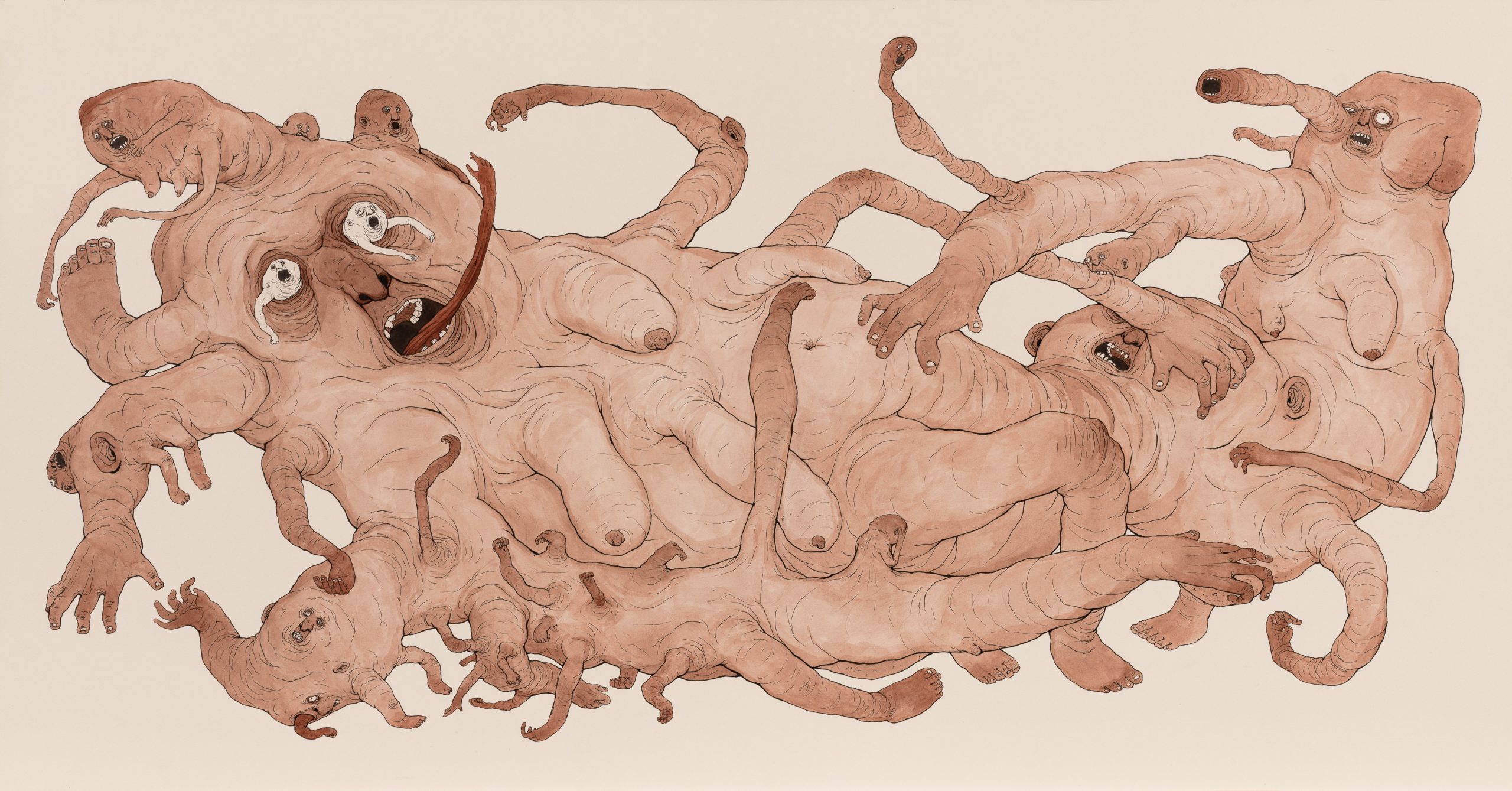ANTROPOCORPI 1, C – 18 – 98
Request price
Description
NEMO’S – Antropocorpi 1, C – 18 – 98
Acrylic and ink on paper on cardboard panel
100 cm x 50 cm, 2019
Artist info
Nemo's
Nemo's began drawing as a child, later on recognizing this gesture as the most authentic way of expressing himself. In 2002 he started painting walls in abandoned spaces or factories; he then adopted the name of the main character of the book "Little Nemo in Slumberland" by cartoonist Winsor McCay. His first inspiration came from anatomy, biology and the comics books he found at home, together with science fiction movies and dystopian cyberpunk tales of the early 1980s. Since the very beginning he was interested in human beings as "social animals", which led him to define a prototype of a hominid describing the contradictions of our time: "Naked and devoid of any sign of civilization, the human being shows itself for what it really is: a defenseless creature at the mercy of nature and of itself without hierarchical structures, whose only purpose is to survive”. In a balance between wonder and repulsion, Nemo's thus describes contemporary society and tries to give a name to what surrounds him.
Nemo's art can be appreciated in numerous countries worldwide (Latin America, United States, India, Africa and Europe). His work is rich with social meanings and deals with realities that are usually marginalized, such as suburbia and prisons.
Between 2016 and 2017 he published two books with the Italian publisher Logos. The first one is a collection of drawings, and the second one deals with the lack of water issue around the world.
More info
Signed by the artist.
In this series of artworks, realized between 2018 and 2019, Nemo’s, continues and deepens his research on the human being as a “social animal”: through his typical hominids “naked and devoid of any sign of civilization”, the artist describes and analyzes situations and realities that are different from each other but at the same time lead to the universal condition of loss of humanity in today’s society.
Starting from our relationship with television, with the screen, which filters all kinds of information and often becomes the only channel of contact with a reality that paradoxically becomes increasingly distant and almost inaccessible. Then we find the “untouchables”, the last step on the hierarchical ladder of the Indian caste system: people so poor that they cannot even be touched, but who carry on their shoulders the weight of an entire economic system.
Finally, the representation of the chaos that permeates all that surrounds us is entrusted to the image of a being whose anatomical parts are formed by as many human figures that intertwine with each other.
Installments payment
In case you're interested in purchasing and you would like to know more about the chance to take advantage of an installment payment plan please contact us at sales@galleriavarsi.it
Secure payments
Pay in monthly installments
We ship all over the world
SUPPORT ON PURCHASES
MORE Nemo's
Go to artist page-
 Sale!
Sale!
Buy now135,00€120,00€ -

35,00€
Add to cart -

-

400,00€
Buy now -

35,00€
Add to cart



























